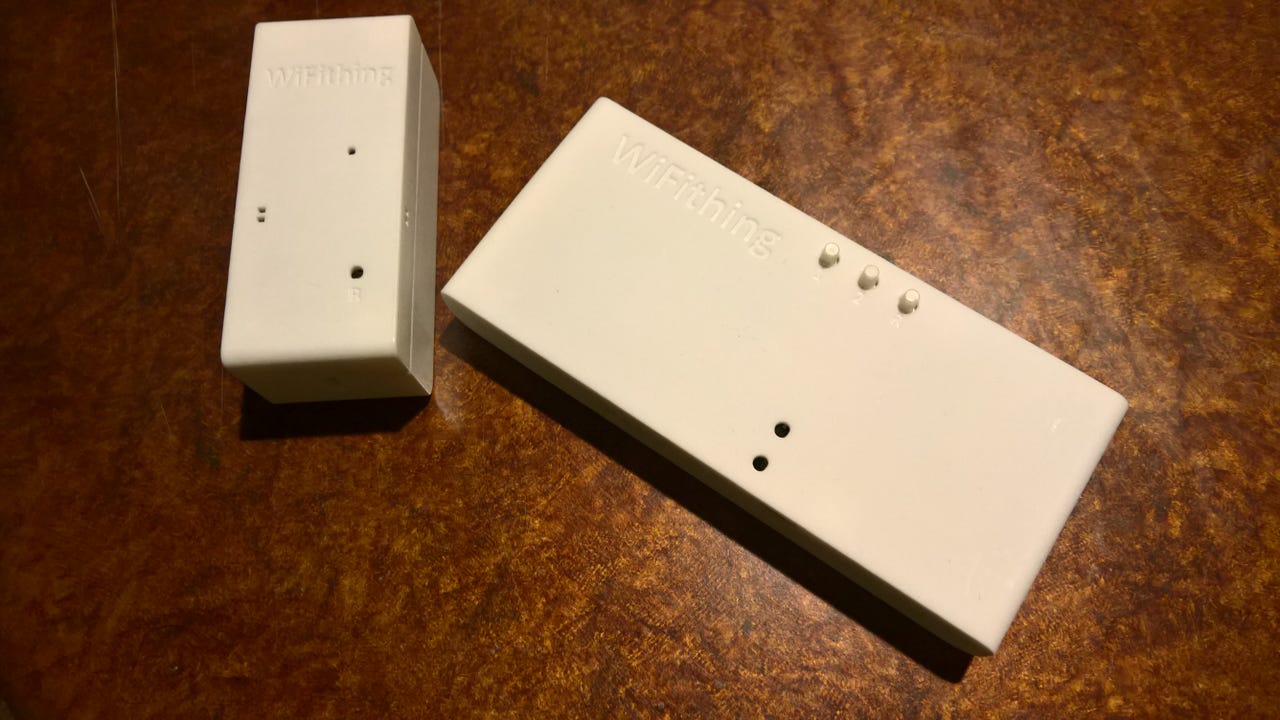Internet of Things the easy way with WiFithing

One of the more entertaining aspects of attending events like CES is the chance to meet new companies and to learn about new products that might not have hit the shelves yet.
This year, one of the more interesting start-ups is British, an Internet of Things platform called WiFithing.
Like many projects WiFithing was born as a result of solving a problem, in this case, managing the central heating system in an old home that couldn't be modified. The result was a simple, easy to manage IoT platform that offers a secure connection as well as codeless development.
It's also low power, and while you can power the control board using a USB power supply, it's also possible to run the entire system off batteries making it suitable for use where traditional power isn't available.

The WiFithing devices: a controller and an endpoint
At the heart of WiFithing is a cloud-hosted development platform that lets you group tasks and actions into a basic workflow, which is then downloaded to the various devices you're using. That means you don't need to rely on the cloud, you only use the service when you want to modify a workflow, perhaps changing the time at which it's triggered.
More CES 2016
Setting up the WiFithing system is quick and easy - and you can even do it in a Vegas hotel room! Devices are registered using a QR code, which sets up an encrypted connection between the device and the WiFithing cloud service. Devices pull data from the cloud, so you don't need to open holes in a firewall or worry about dealing with the complexities of network address translation; just leave it up to your router. Once registered, you use Texas Instruments' configuration software to connect the WiFithing hardware to your network, configuring wi-fi connections.
Once the WiFithing controller is set up, you can then use the web service to add wireless-connected endpoints. These use low-power wireless to connect to controller, and can operate for a long time on just a simple set of batteries. Endpoints are able to send readings from sensors or trigger actuators; giving you a low cost, secure, way of building a network of IoT devices in your home or business.
It's a sensible design approach, a cloud service, a smart gateway, and a set of low power, low cost devices. Data is sent to and from the cloud to the gateway, which then manages the various devices you're using.
As the platform is open source, it's possible to write your own, more complex, code using free tools from Texas Instruments. The WiFithing hardware is based on TI's Energia system-on-a-chip, and TI provides tools for writing and delivering C++ code. WiFithing also provides developers with its firmware, so you can modify code as necessary and reflash devices with your own version of WiFithing's firmware.
Too often IoT devices are single purpose pieces of hardware that can't be modified or used to build custom services. Others require a significant level of development skill just to get them out the box! By taking an open approach to its platform, and using a cloud-based tool to simplify application development, beginners can work with the cloud to quickly configure and build services (and even work with third-party devices as part of a WiFithing environment), while experts can drill down to raw code and build their own custom services.
It'll be interesting to see how WiFithing progresses beyond CES. It's a big step going from scratching an itch to building a product. Now the WiFitthing team has to turn its prototypes into a business - something that's a lot harder than writing code or wielding a soldering iron.
Read more